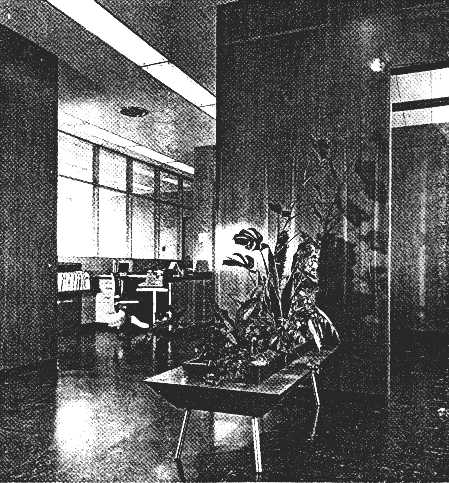
Marwell Building, upper level foyer, Vancouver, 1951
Before coming to Vancouver and while working at architecture in the Mid-west and East of Canada I was struck by the way so many people there seemed to consider modern architecture as being both experimental and bizarre. To them it was a separate entity, something which occupied a highly dubious place in their pattern of living. Architecture, however, has always been contemporary because the architect has always used new ways of building to express new ways of living. That is why architecture is always new, or "modern" as some call it.
Architecture is related as much to people as it is to geography or to the spirit of the times. It is an expression of the period in which it is built and to the civilization which surrounds it. Consequently, it should not be carried over from one era into another, any more than it should be blindly transplanted from one continent or even from one region to another.
Ever since man started to build, what he constructed was not only his physical shelter, but also his psychological shelter. His buildings conveyed to him a feeling of security, permanence, and continuity within an ever changing world. Consequently, the beliefs of a certain period are embodied in its architecture, and, as one culture superseded another, so one type of architecture gradually emerged into a new "modern"one.

In earlier times, the architect ws able to disengage himself from the problems of contemporary society because for the most part his clients were powerful patrons, royalty or the church. But today the architect has to look straight at life and at his fellow men. His work aquires a more human significance; there is now a private collaboration between himself and the whole of society. This collaboration, however, has become more impersonal and certainly more secular; as a result, the emphasis is less on the artistic and more on realism and reason.
